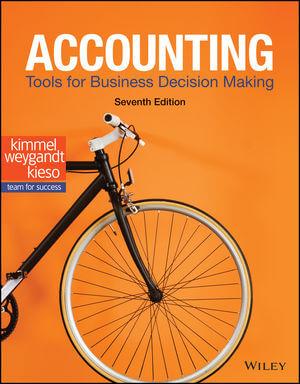Question
1)GH Ltd. manufactures three main products from a common input in a joint processing operation. Joint processing costs up to the split-off point are as
1)GH Ltd. manufactures three main products from a common input in a joint processing operation. Joint processing costs up to the split-off point are as follows:
Direct materials$10,000
Direct labour25,000
Supervisor's salary40.000
Security20,000
Custodian salaries25,000
Utilities30,000
The company allocates these costs to the joint products on the basis of their total sales at the split-off point. Each of the products may be sold at the split-off point or processed further. The additional processing costs and sales value after further processing for each product, on an annual basis, are:
FurtherSales Value
Sales ValueProcessingAfter Further
Productat Split-offCostsProcessing
1030$70,000$ 40,000$100,000
106020,00025,00030,000
201060,0005,00070,000
The "Further Processing Costs" consist of variable and avoidable fixed costs.
Which product or products should be sold at the spilt-off point, and which product or products should be processed further? Show computations.
2)GH Ltd. also provided the following information about a third product:
Sales$15,000
Variable costs7,000
Traceable fixed costs6,000
Common fixed costs8,000
Operating loss($6,000)
What would happen to GH Ltd.'s operating income if it decided not to produce this product?
3)BADM Variety Inc. runs a small convenience store. It has one refrigerator in which it stocks 355 ml cans of soft drinks and 500 ml cartons of orange juice. The beverages are kept on separate shelves. There are five shelves in the refrigerator. The owner only has time to stock the refrigerator once a day. The following is the additional information BADM Variety Inc. has provided:
Soft DrinksOrange Juice
Selling price per unit$1.75$3.99
Cost to BADM Variety Inc. per unit0.501.99
Units per shelf13090
Daily demand in units600500
How many shelves should be allocated for each product? How much operating income would the company lose if it must stock at least two shelves of each beverage?
4)UOG Company makes 20,000 units per year of a part that it uses in the products it manufactures. The unit product cost of this part is computed as follows:
Direct Materials
$24.70
Direct Labour
$16.30
Variable Manufacturing Overhead
$2.30
Fixed Manufacturing Overhead
$13.40
Unit Product Cost
$56.70
An outside supplier has offered to sell the company all the parts that UOG needs for $51.80 a unit. If the company accepts this offer, the facilities now being used to make the part could be used to make more units of a product that is in high demand. The additional contribution margin on this other product would be $44,000 per year.
If the part were purchased from the outside supplier, all of the direct labour cost of the part would be avoided. However, $5.10 of the fixed manufacturing overhead cost that is being applied to the part would continue, even if the part were purchased from the outside supplier. This fixed manufacturing overhead cost would be applied to the company's remaining products.
Required:
a) How much of the unit product cost of $56.70 is relevant in the decision of whether to make or buy the part?
b) What is the net total dollar advantage (disadvantage) of purchasing the part rather than making it?
c) What is the maximum amount the company should be willing to pay an outside supplier per unit for the part if the supplier commits to supplying all 20,000 units required each year?
Step by Step Solution
There are 3 Steps involved in it
Step: 1

Get Instant Access to Expert-Tailored Solutions
See step-by-step solutions with expert insights and AI powered tools for academic success
Step: 2

Step: 3

Ace Your Homework with AI
Get the answers you need in no time with our AI-driven, step-by-step assistance
Get Started


